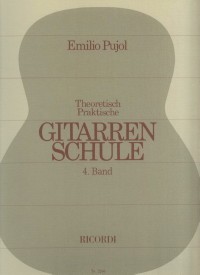
Mario Rodriguez Arenas’ La Escuela de la GuitarraĪnother in the Tárrega tradition was Argentine guitarist-teacher Mario Rodríguez Arenas, whose seven-volume La Escuela de la Guitarrawas published in 1923. The Tárrega gospel was brought into the glare of the 20th century by teachers such as Pascual Roch and Emilio Pujol, who published influential methods sufficient to keep students active for most of their apprenticeships. I have inflicted many of Carcassi’s beginner pieces on succeeding generations of eager novices, hopefully contributing something of lasting value to their musical awareness and the development of their fingers.Īs we progress forward historically, we come across the enigma of Francisco Tárrega, a great teacher by all accounts, but one who never systematized his methods within a single publication. Such music lasts forever in the mind and remains perennially fresh. In 1953, I started lessons with a teacher who used the Carcassi method (though fortunately he was not an adherent of Carcassi’s right-hand technique, with little finger on the soundboard!). The great names of the age are etched on our fingers and in the hearts of most classical guitarists-Ferdinando Carulli, Fernando Sor, Mauro Giuliani, Dionisio Aguado, Luigi Legnani, Matteo Carcassi, and so on maestros whose compositions often feature a multitude of studies both easy and difficult, and who were eager to advance the art of pedagogy. Gaspar Sanz’ Instrucción de música sobre la guitarra españolaįrom there, it is but a short hop to the early 19th century, where the methodology of the guitar expanded in a hundred varied flowerings. Just skimming the surface, one should also mention Francesco Corbetta, Giovanni Battista Granata, Robert de Visée, Lucas Ruiz de Ribayaz, Ludovico Roncalli, Francesc Guerau, and Santiago de Murcia-just a few of the hard-working gentlemen in the 17th century who immortalized their music in exquisite publications. In particular we remember Gaspar Sanz and his Instruccion de música sobre la guitarra española(Zaragoza, 1674), but many other books of guitar music proliferated. Historically, the field broadened whereby all kinds of methods were published. 1535), were not short of direct instruction, but fundamentally they were anthologies of appropriate pieces to be studied by learners in a reasonably progressive fashion. The early books, especially Milán’s El Maestro (ca.

Aided by progress in the art of printing, these players began the exploration of what academics now call “methodology,” defined as “a system of methods in various fields.” They began the quest for the guitaristic Holy Grail, a system whereby a plucked chordophone such as the guitar could be learned by eager students of varying abilities. The quest for the perfect guitar method began in the 16th century with the vihuela books of Luis Milán, Luis de Narváez, and Alonso Mudarra (as well as a few others).

BY GRAHAM WADE | FROM THE SUMMER 2019 ISSUE OF CLASSICAL GUITAR


 0 kommentar(er)
0 kommentar(er)
